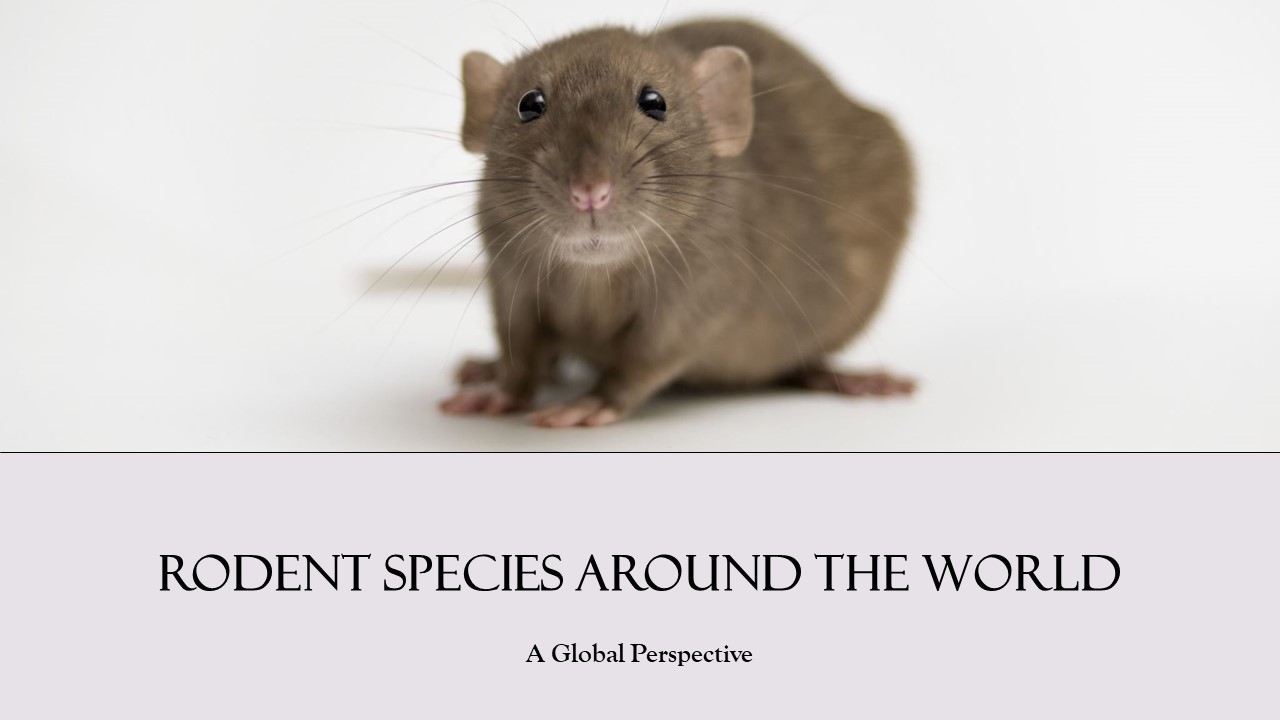Physical Address
304 North Cardinal St.
Dorchester Center, MA 02124
Physical Address
304 North Cardinal St.
Dorchester Center, MA 02124


Rodents, a diverse group of mammals characterized by their continuously growing incisor teeth, have a global presence that spans almost every corner of the Earth. With over 2,200 recognized species, rodents represent the largest group of mammals, both in terms of diversity and population. From the mighty beaver dams of North America to the agile squirrels darting through the trees in Europe, rodents play a significant role in ecosystems around the world. In this comprehensive exploration, we’ll delve into the fascinating world of rodents, examining their distribution, behaviors, and ecological significance on a global scale.
Rodents belong to the order Rodentia, which is further divided into multiple families, including Cricetidae, Muridae, and Sciuridae, among others. These families encompass a wide range of species, each adapted to specific ecological niches. Here’s a brief look at some of the most notable rodent species from different regions around the world:
Rodents are often underestimated and overlooked in their ecological significance. They occupy a wide range of niches, and their behaviors and activities have far-reaching consequences for the ecosystems they inhabit. Here are some key ways rodents influence their environments:
Many rodent species play a vital role in seed dispersal. They consume fruits, nuts, and seeds and often cache or bury them for later consumption. In doing so, they inadvertently transport seeds to new locations, aiding in the distribution and regeneration of plant species.
Burrowing rodents, such as prairie dogs and gophers in North America, contribute to soil aeration through their extensive underground tunnel systems. This activity enhances soil health and can benefit other organisms in the ecosystem.
Rodents are a primary food source for a wide range of predators, including raptors, carnivorous mammals, and snakes. Their abundance and availability make them a critical component of many food webs.
Beavers are known for their dam-building activities, which create wetlands and influence the structure and composition of riparian ecosystems. In contrast, rodents like voles and lemmings can have significant impacts on vegetation through their grazing and tunneling behaviors.
Certain rodents, like beavers and prairie dogs, are considered ecosystem engineers. They modify their habitats in ways that benefit other species. Beavers, for example, create wetlands that support diverse wildlife, while prairie dogs create open grasslands that provide habitat for numerous species.
Despite their ecological importance, many rodent species face threats to their survival. These threats include habitat loss, climate change, and invasive species. Conservation efforts are essential to protect these often overlooked but valuable members of ecosystems.
As human populations continue to expand, natural habitats are being converted into agricultural land, urban areas, and infrastructure development. This habitat loss can result in the fragmentation and isolation of rodent populations, making them more vulnerable to extinction.
Climate change can affect rodents in various ways. Altered temperature and precipitation patterns can disrupt the availability of food and water, impacting rodent populations. Additionally, changes in climate can lead to shifts in the distribution of rodent species, potentially affecting ecosystem dynamics.
The introduction of invasive species, such as rats and mice, can have devastating effects on native rodent populations. Invasive rodents often outcompete native species for resources and can lead to declines in biodiversity.
Some rodents can act as reservoirs for zoonotic diseases, which can be transmitted to humans and other animals. Efforts to control rodent populations in urban areas must consider the potential for disease transmission.
Conservation measures for rodents typically involve protecting their habitats, controlling invasive species, and monitoring populations to better understand their status and needs.
Rodents have had a significant impact on human society throughout history, both positively and negatively.
Beyond their roles in the wild and in research, rodents have also become popular pets in many parts of the world. Creatures like hamsters, guinea pigs, gerbils, and rats are kept as companion animals due to their small size, ease of care, and social nature.
Hamsters are perhaps one of the most iconic pet rodents. These small, nocturnal creatures are known for their cheek pouches and love of running on exercise wheels. They come in various species and coat colors.
Guinea pigs are larger than hamsters and are known for their social behavior and vocalizations. They require ample space and social interaction, making them a great choice for families.
Gerbils are active and curious rodents that enjoy digging and exploring. They are diurnal, meaning they are awake during the day, making them an excellent choice for people who want to interact with their pets during waking hours.
Domesticated rats, often referred to as fancy rats, are intelligent and can form strong bonds with their human caregivers. They are highly trainable and can learn tricks and respond to their names.
Pet mice are small and generally low-maintenance. They are social animals and are best kept in same-sex pairs or small groups. Mice can be quite active and enjoy playing with toys.
Rodents, with their incredible diversity and adaptability, have established themselves as integral components of ecosystems around the world. From the giant capybaras of South America to the tiny harvest mice of Europe, these small mammals play diverse and vital roles in shaping their environments.
While some rodent species are celebrated as pets and laboratory animals, others are often seen as pests in agriculture and urban settings. It is crucial to strike a balance between managing rodent populations when necessary and preserving the ecological roles they play in the wild.
As our understanding of these fascinating creatures deepens, and as conservation efforts continue to evolve, we can ensure that rodents continue to thrive in their various habitats, contributing to the health and stability of our planet’s ecosystems. In appreciating the global perspective of rodents, we gain a greater appreciation for the intricate web of life in which they are a vital thread.